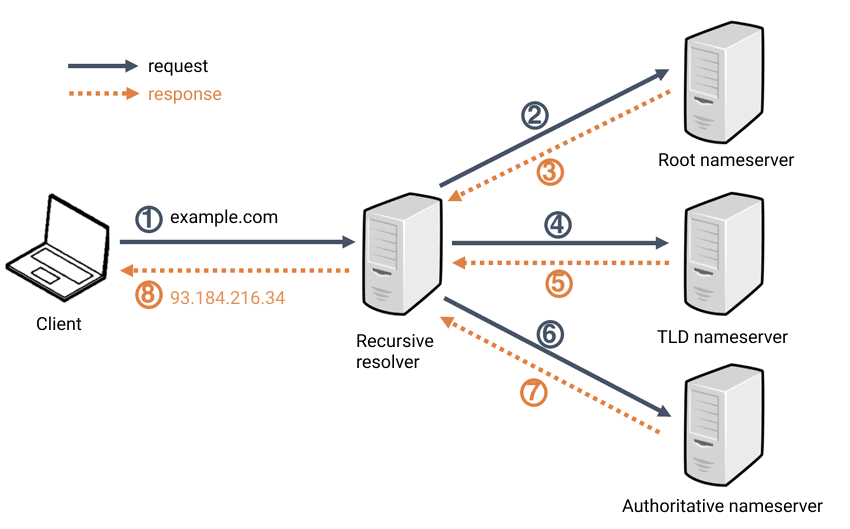The internet is a vast network of connected devices, and behind the scenes, there's a powerful system that helps route traffic to the right destinations. This system relies heavily on DNS records. But what exactly are DNS records, and how do they work? Let's dive in and explore this fascinating topic in a fun and easy-to-understand way.
What is DNS and why is it important?
Before we get into DNS records, it's essential to understand what DNS (Domain Name System) is. DNS acts like the internet's phonebook. When you type a website address (like www.example.com) into your browser, DNS translates that address into an IP address (like 192.0.2.1) that computers use to locate each other on the network. Without DNS, we would need to remember strings of numbers to access our favorite websites!

Types of DNS records and their functions
DNS records are the individual entries in the DNS database, each serving a specific purpose. Here are some of the most common types of DNS records and what they do:
1. A Record (Address Record)
The A record is the most fundamental type of DNS record. It maps a domain name to an IP address. For example, if you type in www.example.com, the A record ensures you reach the correct IP address of the website's server.
2. AAAA Record (IPv6 Address Record)
Similar to the A record, the AAAA record maps a domain name to an IPv6 address. IPv6 is the newer version of the Internet Protocol, designed to accommodate the growing number of devices on the internet.
3. CNAME Record (Canonical Name Record)
The CNAME record allows you to alias one domain name to another. For instance, you could have blog.example.com point to www.example.com. This is useful for managing multiple domain names that should lead to the same destination.
4. MX Record (Mail Exchange Record)
The MX record directs email to the correct mail server for a domain. If you send an email to someone@example.com, the MX record ensures that your email is delivered to the right place.
5. TXT Record (Text Record)
TXT records are versatile and can store any text information. They are often used for verification purposes, such as proving domain ownership or for email spam prevention with SPF (Sender Policy Framework) and DKIM (DomainKeys Identified Mail).
6. NS Record (Name Server Record)
NS records indicate the name servers that are authoritative for a domain. They help DNS resolvers know where to look for a domain's DNS records. If you change your hosting provider, you’ll likely need to update your NS records.
7. PTR Record (Pointer Record)
PTR records are the reverse of A records. They map an IP address back to a domain name. This is often used in reverse DNS lookups, which are essential for email servers to verify the legitimacy of sending domains.
How DNS records work together
When you type a domain name into your browser, here’s a simplified version of what happens:
- Query Initiation: Your browser sends a query to a DNS resolver, usually provided by your ISP (Internet Service Provider).
- DNS Resolver: The resolver checks its cache to see if it already has the IP address for the domain.
- Root Name Servers: If the resolver doesn’t have the information, it queries the root name servers.
- TLD Name Servers: The root name servers direct the resolver to the TLD (Top-Level Domain) name servers (like .com, .org).
- Authoritative Name Servers: The TLD name servers point the resolver to the authoritative name servers for the domain.
- IP Address Resolution: The authoritative name servers respond with the IP address from the A or AAAA record.
- Connecting to the Server: The resolver sends the IP address back to your browser, which then connects to the server and loads the website.
Common DNS Record Issues and Troubleshooting
Understanding DNS records can also help in troubleshooting common issues. Here are a few examples:
- Propagation Delay: When you update DNS records, it can take up to 48 hours for the changes to propagate across the internet.
- Incorrect DNS Settings: Misconfigured DNS records can lead to website downtime or email delivery issues.
- Expired TTL (Time To Live): TTL is the duration that a DNS record is cached by a DNS resolver. Setting an appropriate TTL is crucial for balancing load and timely updates.
Fun Facts About DNS
- Age of DNS: DNS was created in 1983, making it over 40 years old!
- DNS Queries: There are over 200 billion DNS queries made every day worldwide.
- Public DNS Servers: Google’s public DNS server IP is 8.8.8.8, which is easy to remember and widely used.
All in all...
DNS records are the unsung heroes of the internet, ensuring that our digital world runs smoothly. Whether you're accessing a website, sending an email, or verifying a domain, DNS records play a crucial role behind the scenes. By understanding the basics of DNS and its various records, you can gain a greater appreciation of how the internet works and troubleshoot issues more effectively.
So next time you type a domain name into your browser, you'll know a little bit more about the magic happening behind the scenes, making your online experience seamless and enjoyable. Happy surfing!